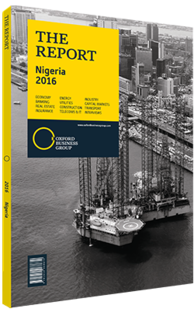Construction materials
Dangote Cement’s (DanCem) foray into cement manufacturing started in 2000, with its acquisition of the federal government’s equity stake in the Benue Cement Company. With investments in excess of $5bn, DanCem’s rise to the top has transformed the industry, taking the sector’s installed capacity in Nigeria from around 4.8m tonnes in 2000 to over 38.1m tonnes currently. DanCem is expanding its footprint across Africa, with recently opened plants in Cameroon, Ethiopia, South Africa, Tanzania and Zambia. While these expansions have taken DanCem’s installed capacity to about 43.3m tonnes, further investments across the continent are set to increase this to over 74m tonnes by 2019. DanCem is the largest listed entity on the Nigerian Stock Exchange with a market capitalisation of $11.4bn.
Financial Performance
DanCem’s first quarter 2016 results showed that after-tax profits fell by 25% year-on-year (y-o-y) because other comprehensive income (OCI) fell 52% y-o-y to N855m ($2.7m). Although sales grew by 23% y-o-y to N140.5bn ($443.6m), a gross margin y-o-y contraction of 941 basis points (bps) to 55.7%, a 27% y-o-y rise in operating expenses (opex) and a negative swing of N1.6bn ($5.1m) on the net interest expense line were the drivers behind the y-o-y decline of the bottom line. These negatives proved significant and resulted in a 22% y-o-y decline in profits before tax (PBT).
Sales grew by 11% quarter-on-quarter (q-o-q). However, PBT and after-tax profits grew markedly, by 155% and 288% q-o-q, respectively, largely driven by an 88% q-o-q decrease in net interest expense. A gross margin expansion of 571 bps q-o-q and a 23% q-o-q reduction in opex also contributed. While sales missed forecasts by 7%, PBT was broadly in line with forecasts due to positive results in the net interest expense, opex and gross margin lines.
The marked growth in sales was driven by y-o-y volume growth of 70% to 6.4m tonnes. This was underpinned by a 45% y-o-y rise to 4.5m tonnes in Nigeria. Following higher volume contribution from new plants, dispatches for West and Central Africa and South and East Africa increased by 449% and 49% y-o-y, respectively, to 1.2m tonnes and 691m tonnes. Overall, Nigeria’s share of unit volumes shrank to 70%, down from 82% in the first quarter of 2015. Management attributed the strong sales in Nigeria to price cuts of around 18% to N26,600 ($83.98) per tonne and strong promotional activity.
Despite the sharp price reductions, the premium on cement prices in Nigeria relative to the blended average for other regions is still around 37%. Despite stellar growth in sales, the y-o-y decline in the bottom line was anticipated due to the margin squeeze following the price falls in Nigeria, its largest market.
In addition, disruption of natural gas supplies to Obajana and Ibese, DanCem’s two largest plants, significantly weighed on costs. While the gas-to-fuel substitution ratio for Ibese was around 34% compared to 85% the first quarter of 2015, supplies to Obajana were more stable at around 72%, compared to 92% in the same period.
Development Strategy
DanCem’s key strategic imperative is to become not only the leading cement producer in sub-Saharan Africa, but one of the largest in the world. Th e company believes that cement demand across the continent will be driven by the huge gap in physical infrastructure, fast population growth and increasing urbanisation. As such, the firm seeks to invest in high-growth markets with an abundance of limestone deposits, investment incentives such as tax holidays, significant deficits in both infrastructure and housing, and substantial volumes of cement imports. While DanCem’s pan-African expansion programme will be key to growth over the medium to long term, its home market of Nigeria will continue to be the mainstay of its global earnings and in the near to medium term.
You have reached the limit of premium articles you can view for free.
Choose from the options below to purchase print or digital editions of our Reports. You can also purchase a website subscription giving you unlimited access to all of our Reports online for 12 months.
If you have already purchased this Report or have a website subscription, please login to continue.

